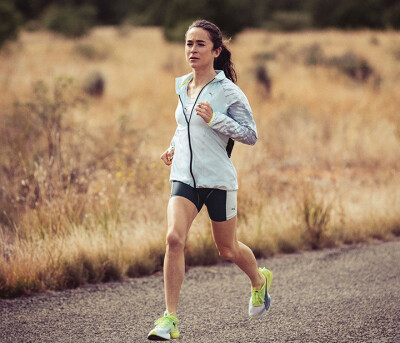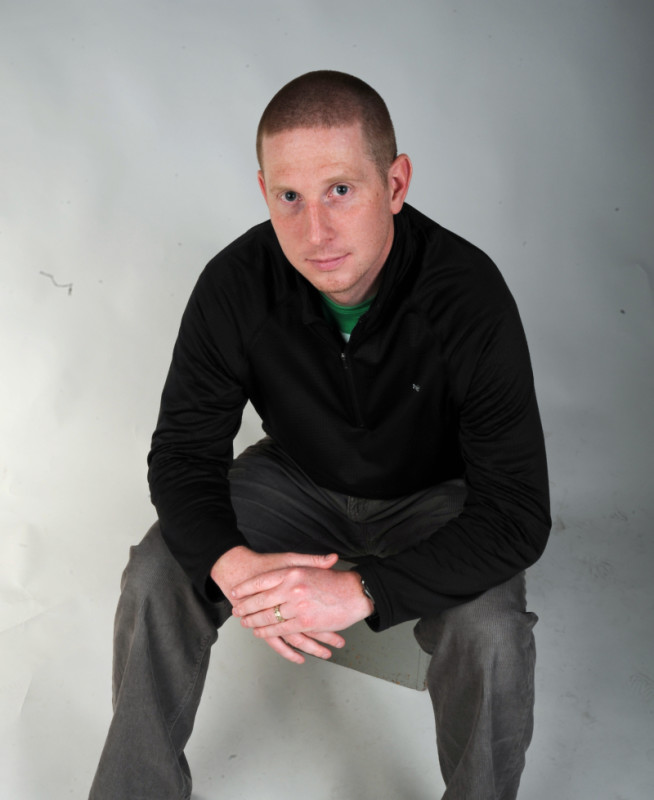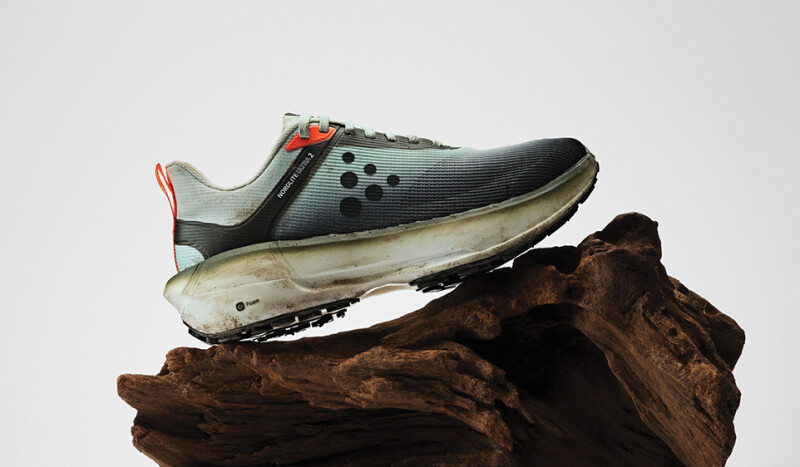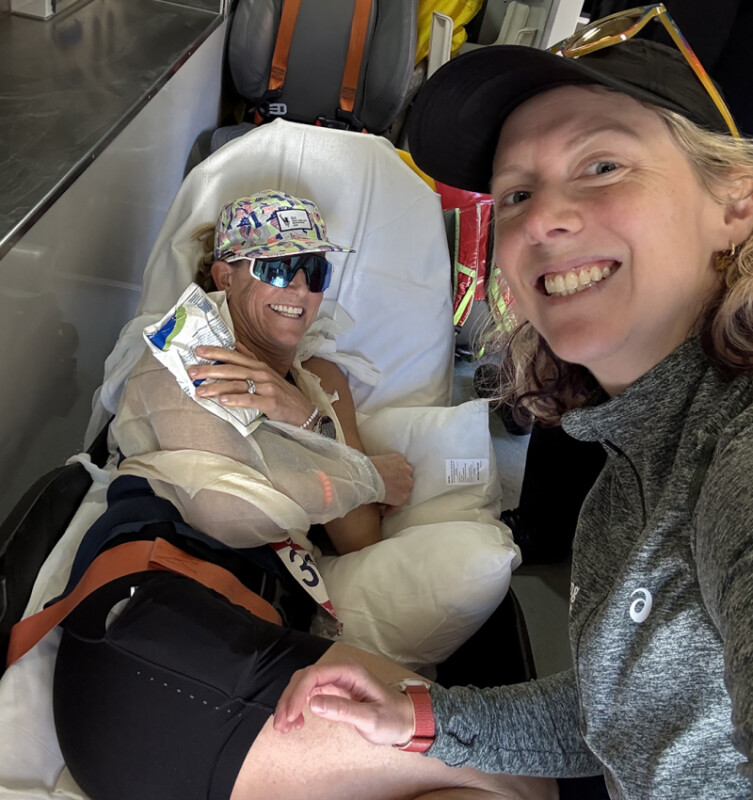When Puma returned to the performance run category early last year, it did so rejecting the safe, traditional stylings of running footwear. Rather than leaning into a familiar pragmatic formula resulting in a perfectly fine and capable $120 neutral training shoe, the German company’s Boston-based design office tapped into the rising “super shoe” wave.
With the $160 Deviate Nitro, Puma inserted a carbon fiber composite plate between two layers of its bouncy Nitro midsole foam, a mixture concocted to give the everyday training shoe an extra-peppy feel. With the $200 Deviate Nitro Elite, then, Puma leaned on a stiffer, thermo-formed carbon plate, slicing 2.3 ounces from its Deviate sibling to deliver a faster, lighter and more propulsive ride.
“We needed to establish ourselves and we risked getting lost if we put out something like everyone else,” says Todd Falker, Puma Running’s senior product line manager. “These models allowed us to come to market with something strong and on trend.”
But The Cat wasn’t done.
At The Running Event last winter, Puma generated substantial buzz with its most ambitious shoe to date, the Fast-R Nitro Elite. A high-end marathon racing shoe in a bright neon colorway and punctuated by a plastic shark fin protruding from the heel, the $250 Fast-R Nitro includes a full-length carbon fiber plate running through a decoupled midsole. While the rear midsole features a shock-absorbing EVA foam, the forefoot is generously packed with Puma’s bio-based Pebax foam (Nitro Elite) to shoot runners forward.
“We want to be cutting edge,” Falker says of the clearly cutting-edge Fast-R Nitro’s design. “We are the forever faster brand and we want to push the limits.”
Puma’s attention-grabbing return to the running marketplace underscores the continued ascent of the super shoe category and underscores a definitive reality for the performance running marketplace: super shoes haven’t peaked.
Far from it, in fact.
Super Shoe Innovations Charge Ahead
In the last two years alone, the super shoe category has accelerated from a field dominated by a few racing-oriented road shoes with high stack heights and carbon fiber plates into a more diverse and ever-swelling collection of models crafted with different technologies, for different purposes, for different people and at different price points.
Fueled by discovery, new learnings, consumer interest and feedback, the super shoe category has ventured from the road to the trail, from the tip-of-the-spear athlete down to the everyday runner, and pulled run specialty retailers along for the ride with a series of compelling evolutions.
As the folks over at Road Trail Run recently observed: “‘Plates’ are moving from monolithic rigid carbon plates to more dynamically flexing (Carbitex), shaped forms (New Balance Energy Arc), multiple plates in parallel (Hoka Tecton X trail) and non-carbon highly tunable plastics and fiberglass (Salomon Energy Blade). Brands also now offer non-plated versions of the plated platforms (Craft) or PEBA inserts surrounded by more stable foams (Craft, Saucony Xodus Ultra and some others we can’t discuss yet).”
In this still-nascent footwear category, there is an unapologetic, daring and seemingly limitless spirit of discovery, of tweaking and refinement to broaden the super shoes lens and benefit runners.
• Altra, for instance, recently unveiled the $240 Vanish Carbon, a thoughtful attempt to incorporate super shoe concepts into the balanced cushioning-natural foot shape framework Altra has finetuned over the years. The two-thirds-length carbon plate (Carbitex AFX Formed) found in the Vanish Carbon is stiff in one direction yet flexible in the other.
The plate, surrounded by an energy-efficient Ego Pro foam, also includes flex grooves in the forefoot’s lateral side, which Altra co-founder Brian Beckstead says allows for more flex in the toes and a more natural and fluid toe-off.
• In its new FuelCell SuperComp Pacer, New Balance sandwiches a cambered carbon fiber plate within two layers of its popular FuelCell midsole, which features a void underfoot to allow for “maximum displacement” of the plate. Positioning the SuperComp Pacer as a racing shoe for distances from the 5K to the half marathon, New Balance also traded the hefty stack height so commonplace in many super shoes for a sleeker 27mm/19mm design that reduces weight. (By contrast, the New Balance RC Elite 2 approached 40mm.)
“It’s a shoe that’s closer to the ground, more nimble and with the benefits of high energy return,” New Balance general manager Danny Orr tells Running Insight.
• Skechers, which first entered the super shoe game in Fall 2018 with the Razor 3 and Speed Elite, has consistently delivered new entrants into the super shoe field. Toying with distinct plate configurations, designs and technologies to “mainstream” the core elements of a super shoe, Skechers will drop the GOrun Persistence this summer.
With its carbon-infused forefoot plate and responsive Ultra Flight cushioning, Skechers will soon bring super shoe elements to the everyday runner at a $110 MSRP price tag.
• After The North Face broke into the super shoe trail category with its Flight Vectiv early last year, others have followed into the forest. Hoka’s ballyhooed, soon-to-drop Tecton X features two parallel carbon fiber plates, a novel construction designed to provide a propulsive ride while still allowing for movement on the trail’s uneven terrain.
And running footwear brands around the globe, from established powerhouses to enterprising upstarts, continue to dial into different use cases. They’re leveraging novel technologies and fresh lessons to bring super shoes to a larger group of consumers. They’re testing materials and midsole compounds with varying levels of energy return, stack heights, weights and midsole geometries. They’re questioning traditional ideas and examining consumer reception.
But just how interested is the market?
Examining Consumer Interest
At Atlanta’s Big Peach Running Co., director of footwear Lucas Stocks says super shoes accounted for about one percent of overall units sold in 2021 across the company’s eight stores. While that number isn’t robust, he nevertheless sees enthusiastic interest in the category.
The challenge, he says, has been inventory availability. Many super shoes hit the market in limited releases, while pandemic-induced supply chain problems have not helped retailers meet demand in a steadily growing class of products.
“That number would be higher if the footwear was more available,” Stocks says.
Inventory challenges aside, Stocks is encouraged by the category’s rampant progression, particularly when super shoe elements weave into daily training shoes for average Joes and Janes. He says Big Peach has found success with the Hoka Bondi X, the brand’s max cushioned road shoe that is spring-loaded with a propulsive carbon-fiber plate.
“That’s a bit more average-guest friendly,” Stocks says. “It’s something people can wear regularly that has a bit more pop.”
Though the cancellation of local races due to COVID-19 dulled interest in super shoes at The Runners Shop in Toronto, shoe buyer Ben Nelson expects to see interest climb throughout the spring and into the summer and fall as runners look to grab a performance advantage.
“Runners are seeing these shoes as a way to capture their full potential in the sport,” Nelson says, adding that the distinctive feel of super shoes compared to mainstream models helps to show customers that it’s not a sales pitch or marketing spin. “Get these on runners’ feet and they feel the difference.”
Balancing accelerating enthusiasm for the super shoe category with inventory is perhaps the biggest challenge buyers like Stocks and Nelson face. Runners hear about one particular model and that’s the one they want to try. Stocks recalls one week at Big Peach where it seemed one guest after another wanted to trial a different super shoe.
“The shoe nerd side of me is completely intrigued by the innovation in this category, but the buyer side is trying to balance that with existing SKUs and finding the happy medium,” says Stocks, who hopes to see vendors commit to more inventory and make it easier for run shops to test product by not requiring large up-front orders.
“The dilemma we face is which models to go with because there’s not a lot of historical data here and we don’t know what people will be excited about.”
Nelson has tracked sales trends at The Runners Shop to inform his buying. One compelling observation at his store: a stronger appetite for super shoes among men than women. While the Saucony Endorphin Pro is near a 50/50 men-women split at the Runners Shop, Nelson says most other super shoe models – the store displays a total of 17 men’s and 15 women’s “carbon” styles on its website – are purchased by men 70-80 percent of the time. That’s led Nelson to be more selective when ordering women’s models.
Super Shoes Moving Forward
By and large, super shoes have been a welcome addition to the run specialty marketplace, generating buzz with differentiated product and opening the door for associates to have the “two-shoe” talk. And the category’s continued evolution, especially with more versatile, accessible product, seems promising.
Orr says the appetite for super shoes has surpassed what he and his New Balance colleagues anticipated, while others, including Altra’s Beckstead and Puma’s Falker, see a growing number of runners recognizing the value of having multiple shoes and understanding that different shoes exist for different purposes.
“So far, the market wants more and that’s why brands are building more,” says Beckstead, adding that running footwear has “never been in a more innovative time.”
Between midsole technologies, materials advancements, developments in plates, a richer understanding of footwear geometry and deep research into biomechanics, including footwear’s interplay with the body, Beckstead expects running shoe manufacturers to continue pushing the limits in the super shoe category.
“I don’t know where the ceiling is,” he says, though he suspects regulations will likely determine where super shoes go on the high-performance racing side. (It’s worth noting that the director of health and science at World Athletics, running’s international governing body, acknowledged last summer the need for more sophisticated rules to keep pace with super shoe advancements.)
Keith Shelton, senior director of performance running at Skechers, sees the future of super shoes not necessarily tied to plates, but rather the development of supercritical foams that reduce weight while increasing resiliency. He says this will unlock even more opportunities in the trail and daily training categories with innovations eventually trickling into the mainstream models that comprise the bulk of running store sales.
Since Nike introduced super shoes to the world in May 2017 with its ZoomX Vaporfly 4%, the run specialty marketplace has expanded, evolved and experimented with the category. Brands have poured time, innovation and energy into dialing up fresh solutions, crisscrossing use cases and carefully considering the runner. Innovation has carried the day and there is more – a lot more – to come in the super shoe realm.
“Here’s the thing: people want to run fast and if there’s a shoe that will help them do that and feel good, that’s a win,” Puma’s Falker says.







